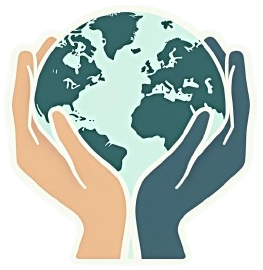Technological Equality
Even Development of All Regions
Today, technological progress is concentrated in the hands of corporations and developed countries, while billions of people remain without access to advanced technologies. In the new system, all regions gain equal opportunities for development, and innovations are shared freely.
How it works:
Every locality gains access to cutting-edge technologies, regardless of geography or development level.
An open system for sharing knowledge and technology allows regions to independently adopt new solutions without reliance on corporations.
Mandatory modernization of outdated equipment—old devices are recycled, and the population receives modern alternatives.
Conclusion:
Technologies become universally accessible, the gap between regions disappears, and global equality in living standards is achieved.
How it works:
Every locality gains access to cutting-edge technologies, regardless of geography or development level.
An open system for sharing knowledge and technology allows regions to independently adopt new solutions without reliance on corporations.
Mandatory modernization of outdated equipment—old devices are recycled, and the population receives modern alternatives.
Conclusion:
Technologies become universally accessible, the gap between regions disappears, and global equality in living standards is achieved.
Free Access to Technologies
Modern technologies are developed for profit, not to improve people’s lives. Large corporations deliberately restrict access to them, creating artificial scarcity and monopolizing the market. In the new system, anyone can use advanced technologies without restrictions.
How it works:
All cutting-edge developments are made open, eliminating patent restrictions and monopolies.
Elimination of planned obsolescence—devices are designed for maximum lifespan and upgradability.
Production of technological solutions without commercial barriers—any region can manufacture its own devices using open blueprints and specifications.
Conclusion:
Everyone gains free access to the most advanced technologies, and progress is no longer hindered for the sake of profit.
How it works:
All cutting-edge developments are made open, eliminating patent restrictions and monopolies.
Elimination of planned obsolescence—devices are designed for maximum lifespan and upgradability.
Production of technological solutions without commercial barriers—any region can manufacture its own devices using open blueprints and specifications.
Conclusion:
Everyone gains free access to the most advanced technologies, and progress is no longer hindered for the sake of profit.
Publicly Accessible Software
Software products are controlled by corporations that monopolize code, restrict functionality, and sell licenses. In the new system, all software is developed openly, and its improvement is a collective effort of society.
How it works:
Any software has open-source code, available for review, enhancement, and use.
All public and social systems operate on open platforms, eliminating dependence on commercial IT companies.
Digital security is ensured through transparency—systems are coded collectively, preventing hidden vulnerabilities and backdoors.
Conclusion:
Software and digital technologies cease to be tools of control and exploitation. Anyone can develop, use, and modify software without restrictions.
How it works:
Any software has open-source code, available for review, enhancement, and use.
All public and social systems operate on open platforms, eliminating dependence on commercial IT companies.
Digital security is ensured through transparency—systems are coded collectively, preventing hidden vulnerabilities and backdoors.
Conclusion:
Software and digital technologies cease to be tools of control and exploitation. Anyone can develop, use, and modify software without restrictions.
